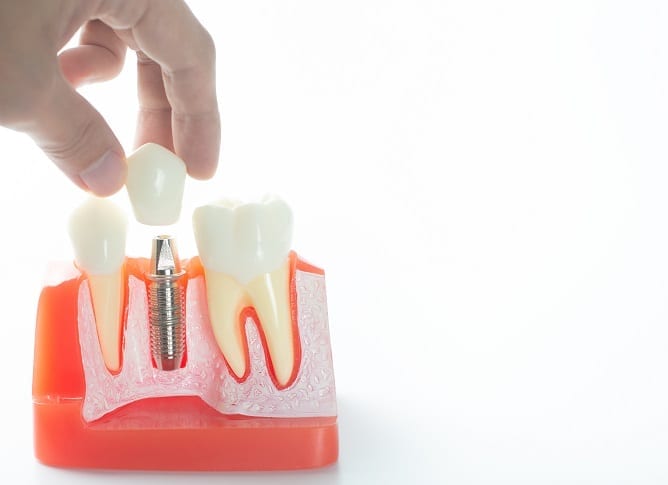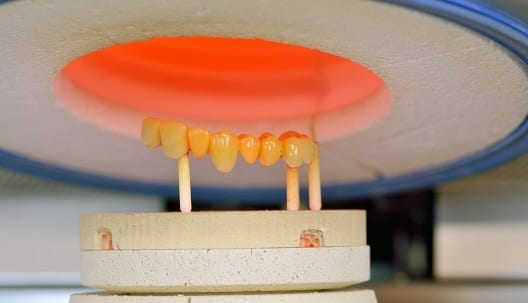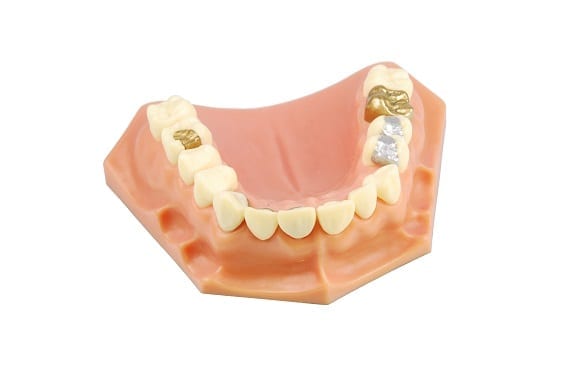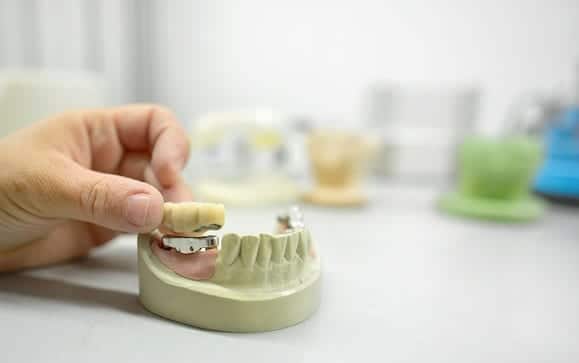Dental crowns or caps are a type of dental prosthodontics or prosthetic teeth restorations that dentists up atop the damaged tooth’s crown or topmost head, which is akin to the bejeweled royal headgear of the same name worn by royalty. It’s commonly associated with root canal therapy or endodontic treatments that pull the infected tooth root out of a heavily decayed tooth before its insides are cemented and the cap is put on top of the now deceased tooth.
A successful crown procedure involves cementing the crown into place, like a baseball cap or royal headwear over the visible part of the tooth. The tooth itself might require drilling and shaving into an abutment that fits right inside the prosthetic tooth. The crown is supposed to fully encase the damaged tooth for its own protection.
With that in mind, what are the things you need to know about dental crowns before you avail of them? Keep on reading to find out.
When Is a Dental Crown Needed?

A dental crown or cap is needed in multiple scenarios. It also helps that it can be tailor-fit to cover your broken or decayed tooth perfectly, thus restoring your bite and smile aesthetics. This customizable prosthodontic can restore or even improve upon the shape and size of the tooth. It can even enhance its strength and biting performance to boot.
It might be necessary for you to get a crown or even a bridge over your broken or missing tooth (via dental implant) when faced with the following conditions or scenarios.
- Compromised Tooth: Your tooth or set of teeth is weak, worn down, or cracked.
- Humongous Cavities: Your damaged tooth has large cavities that can’t be filled with dental filling any longer.
- Dental Implant Crown: You’ve gotten a dental implant inserted in your jaw and you need to cover it with a crown.
- Cosmetic Purposes: You can restore discolored teeth or improve upon badly shaped ones with the help of dental crowns.
- Bridge with Crown Anchors: You have missing teeth where a bridge with twin crowns on either side of it is needed.
- Root Canal Therapy: You’ve undergone an endodontic procedure and you need the crown to cover and protect the dead tooth.
- Pediatric Dentistry: A temporary crown can be used to protect baby teeth damaged by decay due to poor oral hygiene or the child’s aversion to local anesthesia until it naturally pops out.
The Different Benefits of a Dental Crown
Crowns or caps assist in dental protection for teeth that have been damaged, severely such as a tooth with a cracked top or a huge cavity. It’s also used for any tooth that has lost so much enamel that a simple tooth filling operation isn’t enough to secure its structure or withstand the tremendous bite forces of the human jaw.
Here’s a more detailed look on how necessary a crown can be:
- When Tooth Fillings Are Ineffective: A tooth filling, especially those that use composite resin, rely on the remaining enamel to recreate an original structure destroyed by bacterial acid. If the cavity has become so big there’s barely anything left of the tooth, it’s easier for the filling to break apart, especially when faced with molar-tier grinding and chewing. It needs filling to hold on.
- No More Tooth Left to Hold in The Filling: If your tooth is at the point where it’s 50 percent filling or more, there’s less tooth left to hold it. What’s more, reapplying the filling typically involves the dentist having to drill apart the tooth again, thus necessitating widening the cavity to allow the filling to take hold.
- When Caps Make More Sense: A crown makes more sense to cover the entire remnants of your tooth once there’s 50 percent or less enamel left of it. You can either put on the cap while the teeth is still alive and the tooth root hasn’t been inflamed or you can do it after the root inflammation, thus requiring a root canal surgery that’s “capped off” by putting the crown on the dead tooth.
- Other Candidates for Crowns: Aside from people who’ve undergone root canals—the crowns are usually part of the package—other candidates for the dental cap include those who wish to correct the look and function of their teeth. They can avail of these crowns to improve misshapen, discolored, or crooked teeth, particularly teeth at the back of the mouth.
- Dental Implants and Crowns: Once you’re missing a tooth or teeth, you either put in removable false teeth over the gap or get a dental implant to serve as an artificial anchor for your crown or bridge instead of having to shave off a broken or holey tooth in order to use it as the abutment for the cap. The crown is the part you can see and the implant is the part that simulates the function of the tooth root. The implant also makes your crown feel more natural in your mouth.
What Is a Dental Crown Made of?

Crowns can be made of metal like gold or stainless steel as well as ceramic or composite resin that’s basically dental concrete hardened to crown form. You want crowns made of inert material that’s strong enough to withstand your bite force while still remaining safe for your health and body.
Crowns can be made in a variety of materials. You can choose from these depending on your personal preferences and needs as well as your dentist’s recommendation:
- Temporary and Permanent Crowns: This crown type is usually synthesized right in the dentist office and is made of stainless steel or acrylic-based plastic material. It gives your tooth coverage in the short term until a more permanent crown is made. Meanwhile, the permanent crown is made in a dental laboratory that’s off-site of the clinic. These crowns can be made of the materials outlined below, ranging from the sturdiest of metals to the more natural-looking composite resin, ceramic, and porcelain.
- Stainless Steel Crowns: As mentioned above, crowns made of stainless steel are usually of the temporary crown variety used to protect a filling or tooth while a more permanent crown is synthesized from stronger materials. It’s also common to use this crown type on children. Instead of extracting milk teeth from additional decay, these crowns are put on top of them to protect them further decay. When the permanent tooth arrives, the steel crown pops out along with the milk teeth.
- Crowns Made of Various Metals: Metal crowns of the permanent variety are typically composed of platinum or gold. At the size of a hollowed-out tooth, they shouldn’t cost a fortune. However, they’re still quite expensive as far as prosthodontics go. Other crown materials include base metal alloys such as nickel-chromium or cobalt-chromium. These metals are renowned for their toughness and endurance against long-term chewing and biting. They rarely chip or break to boot.
- All-Resin Crowns: The main disadvantage of the superiorly durable metal crowns is their color. They tend to stick out like sore thumbs. This is why they’re often used near the back of the mouth for molars, which can be hidden from view of your smile. An all-resin dental crown is the better solution for front teeth like incisors and canines. Not only are they more affordable than other crown types. They’re also closer to looking like natural enamel compared to metal crowns. However, they have a higher rate of fracturing and wear-down.
- All-Ceramic or All-Porcelain: The all-porcelain or all-ceramic crown was made in order to provide the cosmetic benefits of an all-resin crown with the durability of all-metal crowns. They provide the best color match to enamel compared to other materials. They’re also more suitable for those with metal allergies who wish to replace their cracked or broken molars. However, they tend to be quite expensive as well.
- Porcelain-Fused-to-Metal: In the end, metal crowns remain more durable than porcelain crowns. So why not have the best of both worlds? The PFTM crown is a solid molar crown or bridge option because of the strength demands of the bite forces of the back of the mouth. The porcelain gives the crown a natural tooth appearance that’s still quite sturdy. Beneath it is either gold or platinum metal that gives the porcelain extra reinforcement. However, over time, a dark metal line can show through it the more you chew with it.
How Are Crowns Made and Applied?

Once local anesthetic has been administered to the operation site, your dentist will file down your tooth into a smaller version of itself to make room for the crown. It now serves as an abutment for the cap. He will then make a mold or digital CAD impression of the shaved tooth and design a new crown to fit around it. You will be given a temporary plastic crown while the crown is made. If it’s a one-visit or same-day deal, you’ll just have to wait a few hours before getting your crown put into your mouth.
Normally though, it takes about 2-3 weeks to 3D print or mill a permanent crown out of metal, porcelain, ceramic, or composite resin material. Multiple visits might also occur to make adjustments regarding the fitment of the crown. There might even be technicians using microscopes to carve out the fine details of the crown in question. Once that’s done, the new crown will be cemented into place.
How Long Do Crowns Last?
On average, crowns last for about a decade. However, if you take care of them with brushing and flossing, you can end up with crowns that last up to 25 years or even a lifetime. The 10 year average comes from most people neglecting to floss and brush regularly. It’s therefore impressive that these crowns are made to last even in situations where they face abuse and maltreatment from the careless patient.
Neglect can lead to either the destruction of the crown itself or the compromised tooth it’s attached to because of bacterial acids or even periodontal disease that loosen many a tooth. After all, crowns aren’t perfect tooth replacements.
- Crowned Teeth Can Still Get Cavities: Did you know that a tooth with a crown could still get cavities? Not many people know this and overestimate the amount of protection or coverage a crown gives their decayed teeth. Even though the crown sits above the gums, the tooth’s roots could still decay away if you don’t brush your teeth or floss regularly. You should also gargle with antiseptic mouthwash for good measure.
- Crown-Loosening Blunt-Force Trauma: Crowns can also come loose if you attempt to use your teeth to tear something open, get hit in the face by a punch or a weapon, or if you bite something hard. It’s not unusual for these prosthodontic solutions to fall off due to you undergoing a car accident, for example. It’s also possible for the cement to get loose, requiring them to re-cement the crown. Other times, they need to remake the crown due to damage on the original teeth the crown is covering.
- Crown Wear and Tear: The crown itself, even after 15-25 years of careful maintenance, will break down sooner or later due to the bite forces of your mouth, the bacterial acids that do come through, and the saliva that it’s not built to resist like enamel could. Enamel from a living tooth is supposed to last a lifetime due to its connection to your body care of nerves and blood vessels that give it nutrients and calcium. A crown doesn’t have such renewable resources.
In a Nutshell
Dentists typically use crowns for multitasking purposes since they’re all-around prosthodontics. They can cosmetically improve your smile, help you regain your bite after losing it due to tooth decay, and protect your compromised tooth. It’s both functional and aesthetics-enhancing. It’s also one of your last-ditch efforts to save a tooth along with the root canal therapy. It’s also used to replace missing teeth in tandem with a dental implant surgery. It’s partnered with many dental restoration techniques for sure.
What’s more, there are different types of crowns available based on what they’re made of. There are also temporary crowns that serve as placeholders before the actual permanent crowns are synthesized in the dental lab. Also, unless you’re a hip-hop rapper, you’d probably prefer porcelain crowns instead of gold front teeth because porcelain looks more natural than gold or platinum.
Thantakit International Dental Center is Thailand’s longest established dental center. Situated in Bangkok, our clinic is renowned across the world as a destination for world-class dentistry, with most of our patients flying to us from Australia.
Please contact us today to get a FREE dental consultation.













